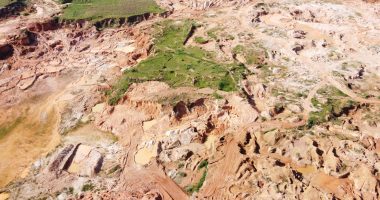Gold mining has for a long time been tied to insecurity in North Western Nigeria. But activities of bandits and illegal miners does not tamper with the rich deposits that are found in the area albeit chipping away copious amounts of it.
Understanding the background of Gold mining in Nigeria proves valuable in the course to save Gold mining in Nigeria. Gold prices currently stand at approximately $2,050 per ounce, reflecting a consistent rise driven by global inflation concerns, economic instability, and robust demand for gold-backed investments. Over the past decade, prices have exhibited a steady upward trend, underscoring gold’s role as a stable asset during financial uncertainties. In 2024, worldwide gold production is projected to reach 131.4 million ounces (moz). Leading producers include China, Australia, and Russia, while Africa significantly contributes through countries such as Ghana, South Africa, and Sudan. Nations like Brazil and China maintain vast gold reserves, ensuring sustainable mining activity and reinforcing the metal’s status as a valuable resource.
Gold mining proves highly profitable due to strong prices and consistent global demand. The all-in sustaining cost (AISC) of gold production typically ranges from $900 to $1,300 per ounce, allowing miners to achieve a profit margin of over $700 per ounce at current market rates. Established mines benefit from lower production costs, while new ventures often grapple with higher initial expenses and regulatory challenges.

The form of mining has a long history, dating back to pre-colonial times when local communities used rudimentary techniques to extract the precious metal. During the colonial period, British authorities expanded mining operations, particularly in the northern region. Nigerian goldfields have undergone extensive artisanal mining due to the absence of systematic exploration and development. Artisanal miners have targeted both primary gold-quartz reefs and associated alluvial deposits. Gold production in Nigeria officially began in 1913, peaking between 1933 and 1943, when the country produced approximately 1.4 tonnes of gold. Production declined during the Second World War as colonial companies abandoned mines, and the sector never recovered.
In the early 1980s, the Nigerian Mining Corporation launched efforts to explore for gold, but these initiatives faltered due to inadequate funding. The dominance of petroleum in the Nigerian economy further overshadowed gold exploration, despite the country’s significant potential for gold deposits.
Key sites, such as the Bin Yauri goldfields, thrived briefly but were abandoned due to shifting policies and declining yields. Post-independence, the focus shifted to oil, leaving gold mining largely neglected. However, renewed interest in diversification has spurred efforts to reclaim these abandoned mines. Challenges include illegal mining and environmental degradation, but policies like the Presidential Artisanal Gold Mining Initiative aim to restore formal operations and community benefits. Illegal mining in Nigeria, particularly in Zamfara and Niger, has led to significant environmental damage, security concerns, and economic losses. Bandit leaders like Kachalla Halilu and Bello Turji have exploited these areas, using mining as a new source of income. The 2022 kidnapping of Chinese nationals in Niger highlights the risks associated with unregulated mining. While mining can boost local economies, illegal activities reduce state revenue and enable criminal exploitation. Recent government efforts to curb illegal mining are a step forward, but more comprehensive solutions are needed.












